L3 Adnexa, Lids, Lashes: Mechanical Signs & Conditions
1/104
Earn XP
Description and Tags
Jessica
Name | Mastery | Learn | Test | Matching | Spaced |
|---|
No study sessions yet.
105 Terms
BCL abreviation means
bandage contact lens
which portion of the orbicularis oculi does voluntary forced closure
orbital portion
which portion of orbicularis oculi does contraction leading to blinking and lacrimal drainage?
preseptal portion
which portion of orbicularis oculi does contraction leading to blinking and eyelid apposition to globe
pretarsal portion
eyelid myokymia and blepharospasm are both _____ muscle contraction
involunatary
eyelid myokymia is usually _____ (uni or bilateral) and localized with ____ twitches
unilateral, fine
eyelid myokymia is assoicated with stress, fatigue and ____
caffeine
blepharospasms can be either unilateral or ____ including orbicularis oculi, corrugator supercilli, and _____ muscles
bilateral, procerus
which 3 facial muscles are involved in blepharospasm
corrugator, procerus, and depressor supercilli
is benign blepharospasm associated with systemic disease or syndrome?
no
is benign blepharospasm uni or bilateral presentation
bilateral
can secondary blepharospasm be either uni or bilateral presentation?
yes
which systemic diseases are associated with secondary blepharospasm(6)
1. meige syndrome- dystonia
2. tourette syndrome- tics
3. infections
4. palsies
5. seizures
6. ocular irritant- dry eye
best tx options for eyelid myokymia
lifestyle changes to avoid triggers
best tx options for blepharospasms conservatively (2)
tx underlying cause
consider glasses or lubricant
best tx options for blepharospasms with meds(2)
1: botox injection for tempoary fix
2. oral meds- benzodiaepines
best tx options for blepharospasms with when nothing else works
surgery
what 3 conditions can cause lowering of the upper lid
dermatochalasis, blepharochalasis, & blepharptosis
entropion is
the inward rotation of the lid
ectropion is
the outward rotation of the lid
blepharoptosis is an droopy lid condition affecting which age group
any ages
blepharoptosis is bi or unilateral weakness of the ___ muscles
levator
t/f blepharoptosis can be congential - cn3 palsy, horners, & marcus gun jaw winking
true
t/f blepharoptosis can be acquired- aponeuronetic, myogenic, neurogenic, mechanical or traumatic
true
dermataochalasis affects which age group
middle age/ elderly
bilateral involutional change of CT or skin elasticity against gravity describes
dermatochalasis
blepharochalasis affects which age group
any ages
blepharochalasis is bi or unilateral transient drooping of eyelid due to recurrent ____ & ____
swelling and inflammation
dermatochalasis
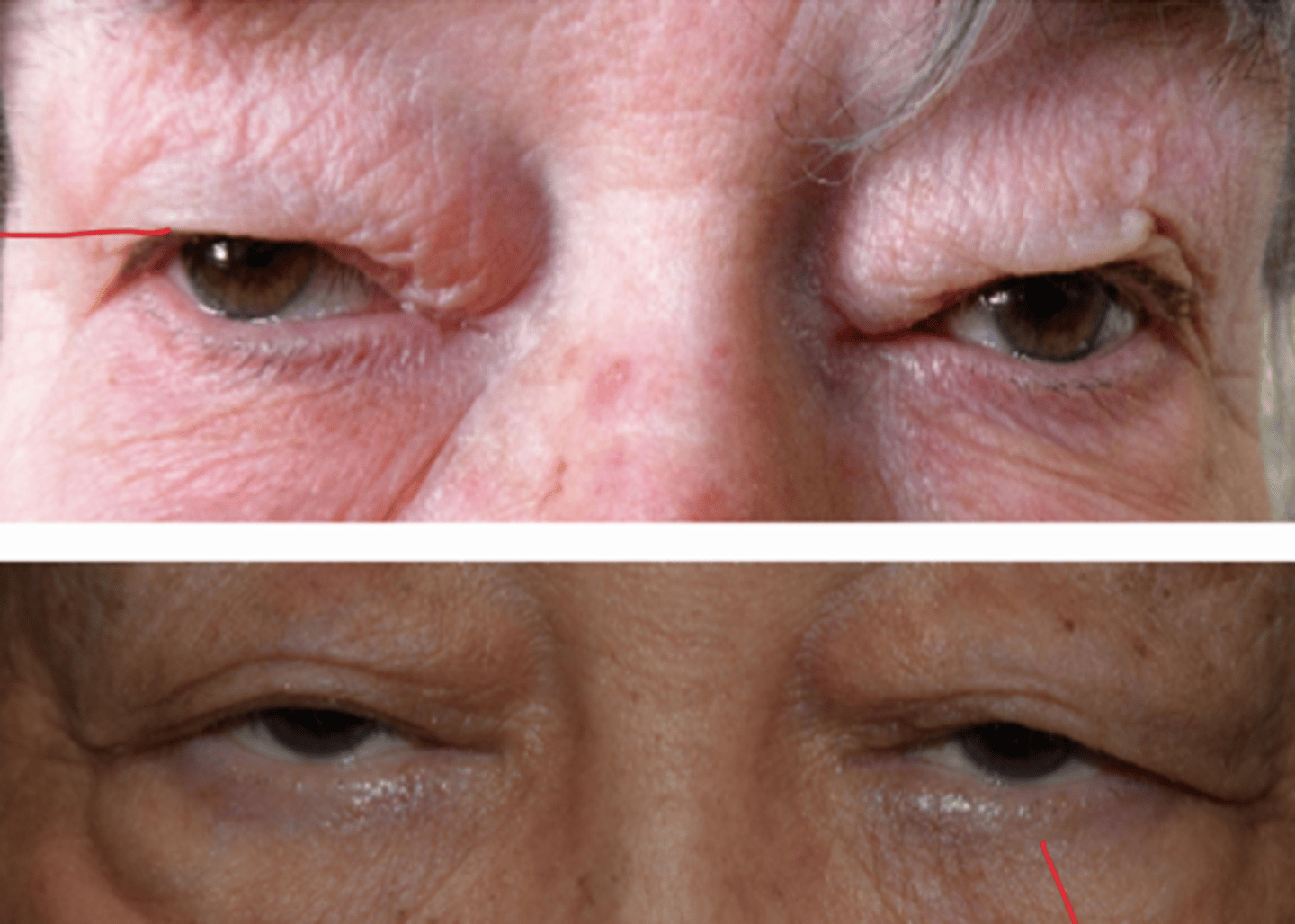
blepharochalasis

reverse ptosis is common in
horners
1. ptosis of upper lid
2. reverse ptosis of lower lid
dx: blepharoptosis
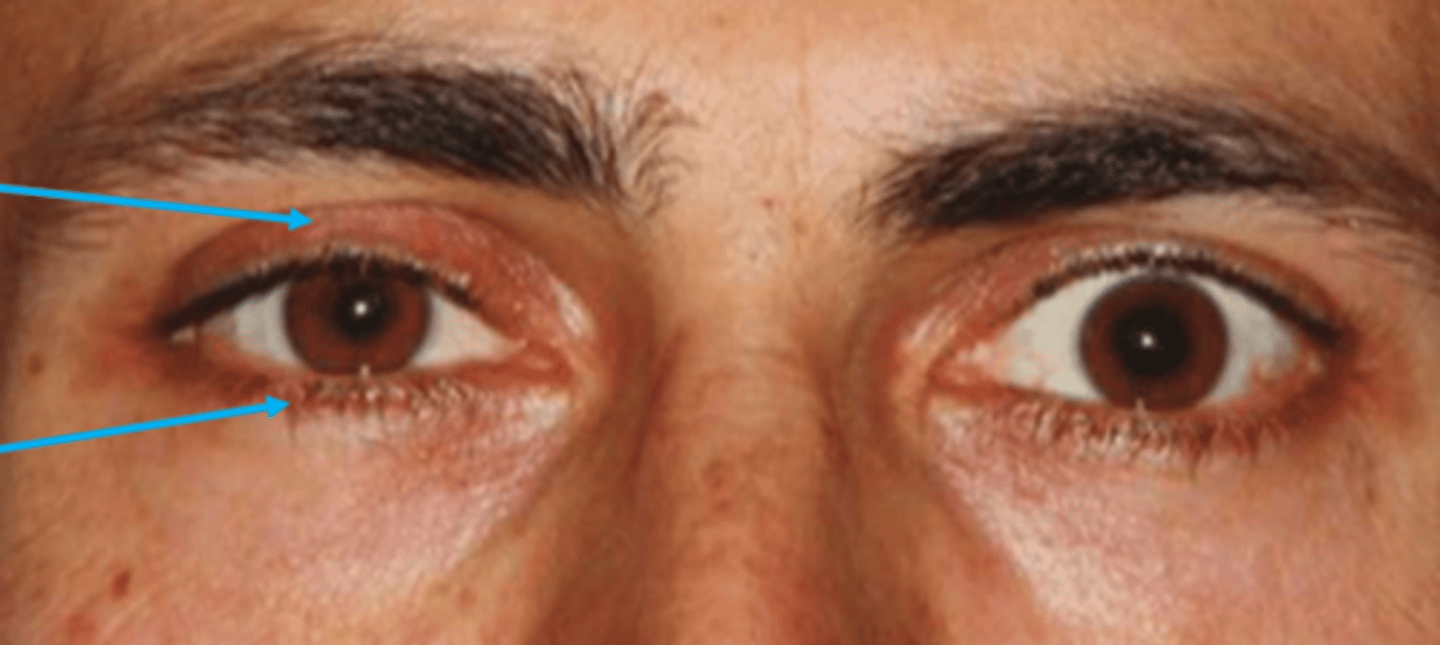
what are the tx options for blepharoptosis (3)
1. address underlying issue
2. oxymetalzoline(upneeq)
3. surgery
what are the tx options for dermatochalasis(2)
1. oxymetazoline(upneeq)
2. surgery
what are the tx options for blepharochalasis(3)
1. address underlying problem
2. anti-inflammatories/anti-histamines
3. surgery
oxymetazoline (upneeq) mechanism of action
alpha adrenergic agonist triggering the levator muscle to lift
oxymetazoline (upneeq) dosing
1 gtt qd to affected eye
side effects for oxymetazoline (upneeq)
dry eye
pain
irriation , redness
headaches
contraindications for oxymetazoline (upneeq)
heart disease/ HTN
how is the snap back test done
pull lower lid down
& count long it takes for it to return
longer it is the worse
inward rotation of the lashes rub against the ocular surface. what does that do to the tears?
disrupts the spread
what are signs that would be seen if the lashes are inward rotated
hyperemia
spk
corneal scarring
what are symptoms that would be seen if the lashes are inward rotated
redness
foreign body sensation
irriatation
epiphora
blurriness
what are the 4 types of entropion
congenital, involutional/senile, cicatricial, and acute spastic
what is epiblepharon
hypertrophic fold of the lower lid and orbicularis oculi overriding the lower lid margin
what is trichiasis
misdirected lashes
what is distichiasis
additional row of eyelashes from MG
epiblepharon
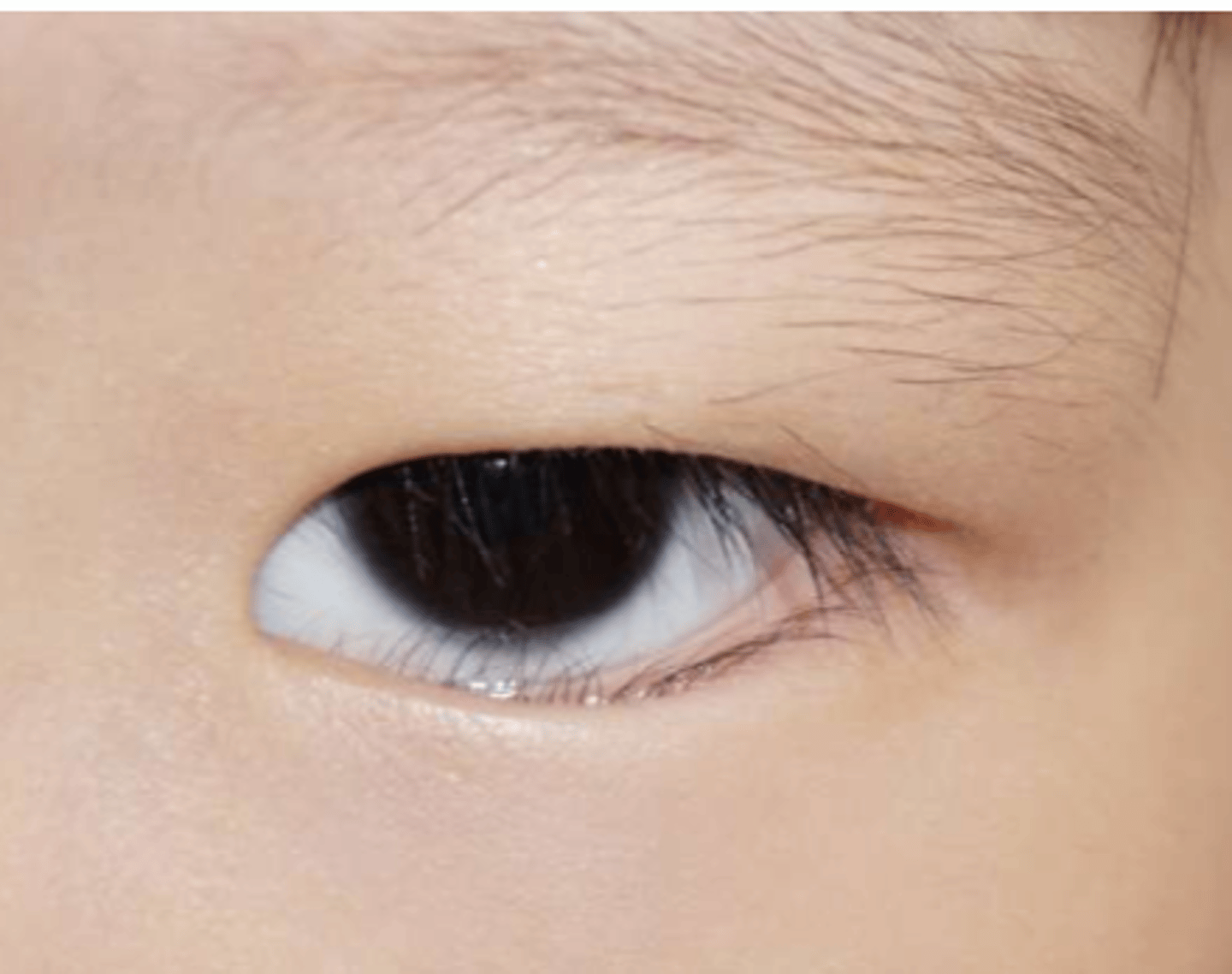
trichiasis
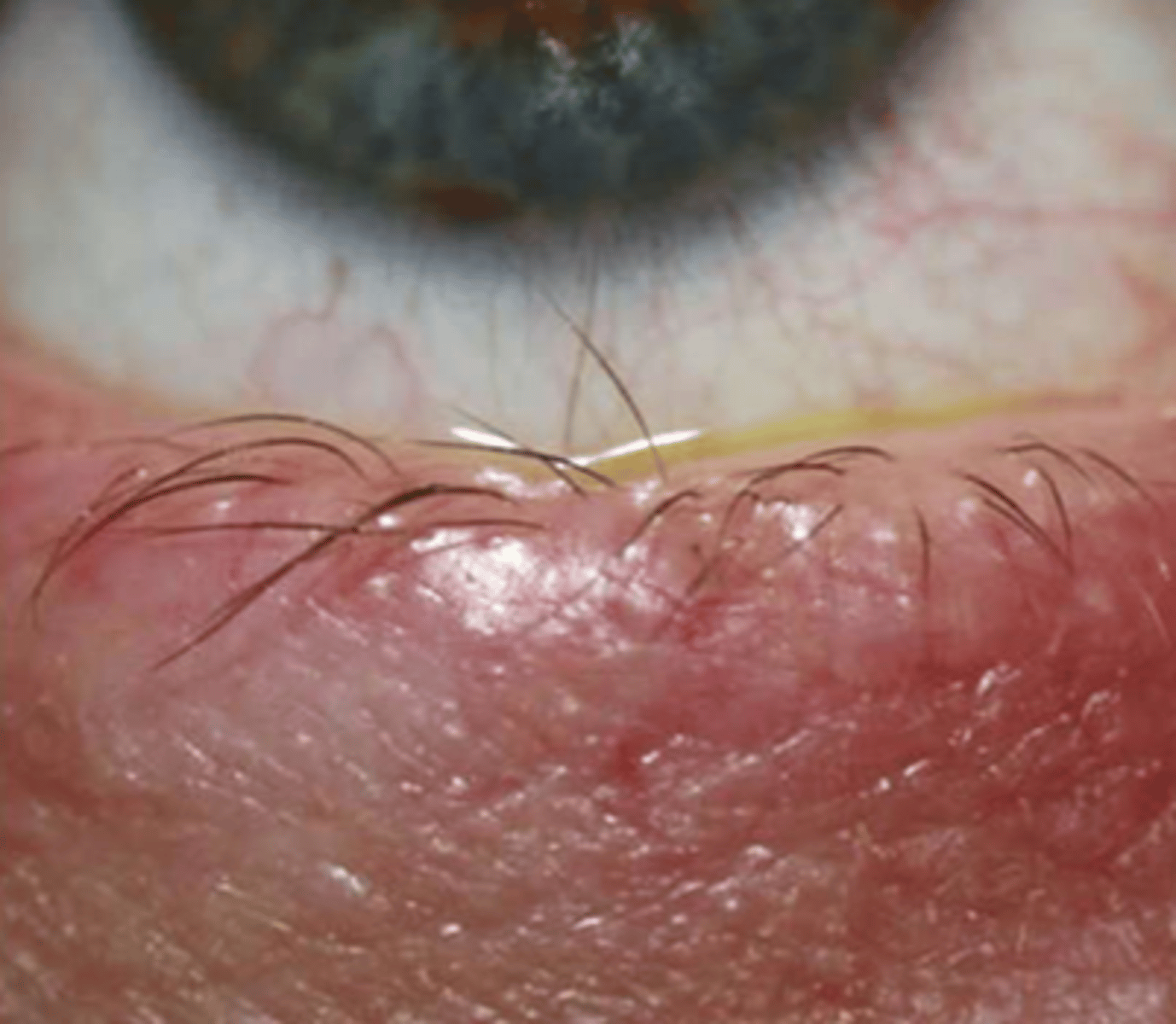
distichiasis
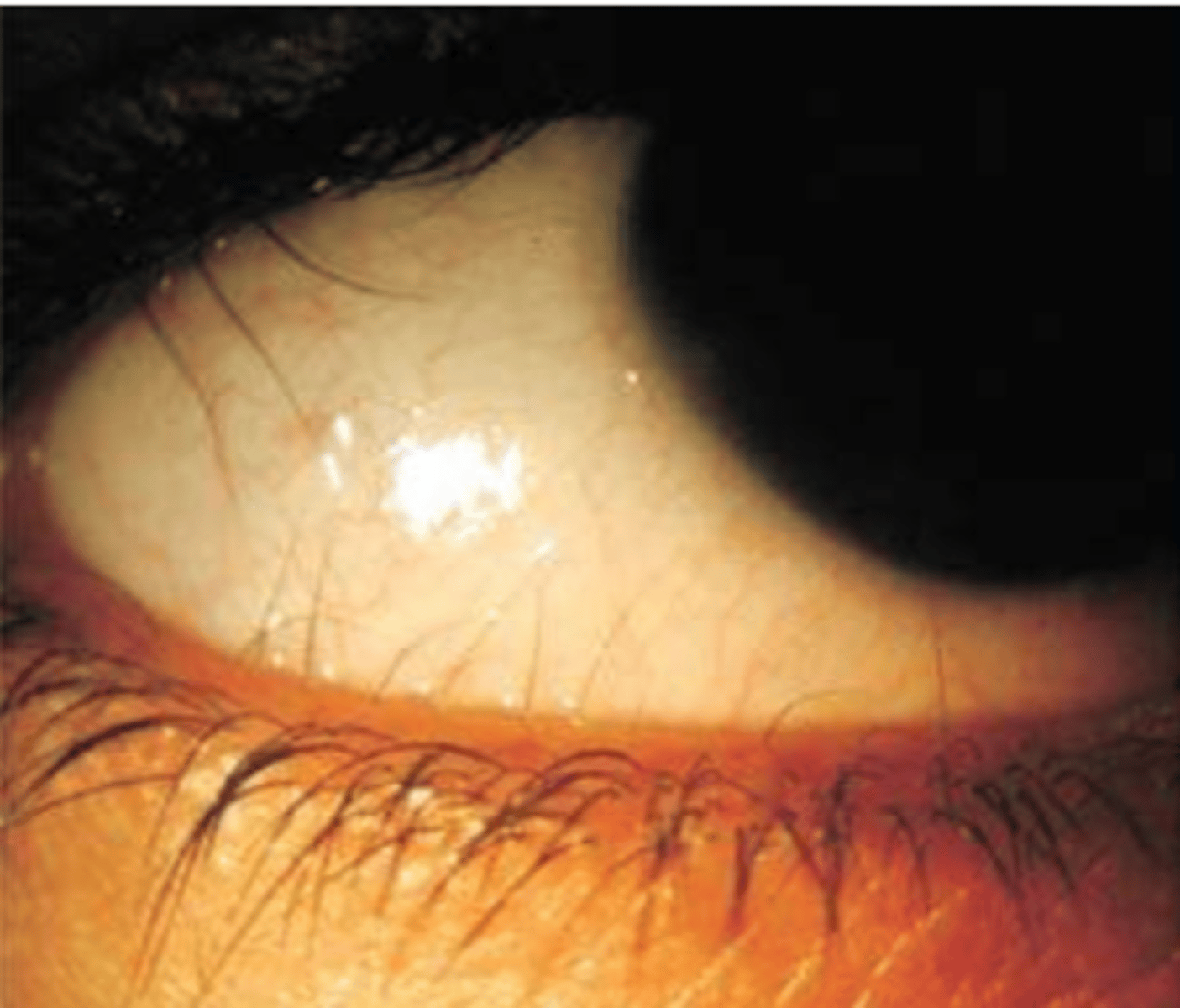
congenital entropion affects who
pediatric population
conservative tx for congenital entropion
lubricant and taping of lower lid
medical tx for congenital entropion
botox to orbicularis m
involutional (senile) entropion affects who
geriatric population
conservative tx for involutional (senile) entropion
lubricant, taping lower lid, bandage SCL
other option beside conservative for involutional (senile) entropion
surgery
who does cicatricial entropion affect the most
any age with chronic ocular condition with scarring
how does cicatricial entropion pathogenesis occur
postererior lamella contraction due to cicatrix formation leading to inward turning of the eyelids
what is the conservative tx for cicatricial entropion
lubricants, taping lower lid and bandage SCL
what is alternative tx for cicatricial entropion if conservative tx doesnt work
surgical repair
who does acute spastic entropion affect
any age with chronic ocular condition that can cause irritation
how does acute spastic entropion present
irrirant leads to blepharospasm and temporary inward rotation
what is the conservative treatment for acute spastic entropion
adress underlying issue, bandage SCL, or self resolving
what is the medical treatment for acute spastic entropion
botox to orbicularis m
what is the last option for tx if meds or conservative tx does not work for acute spastic entropion
surgery
cicatrical entropion
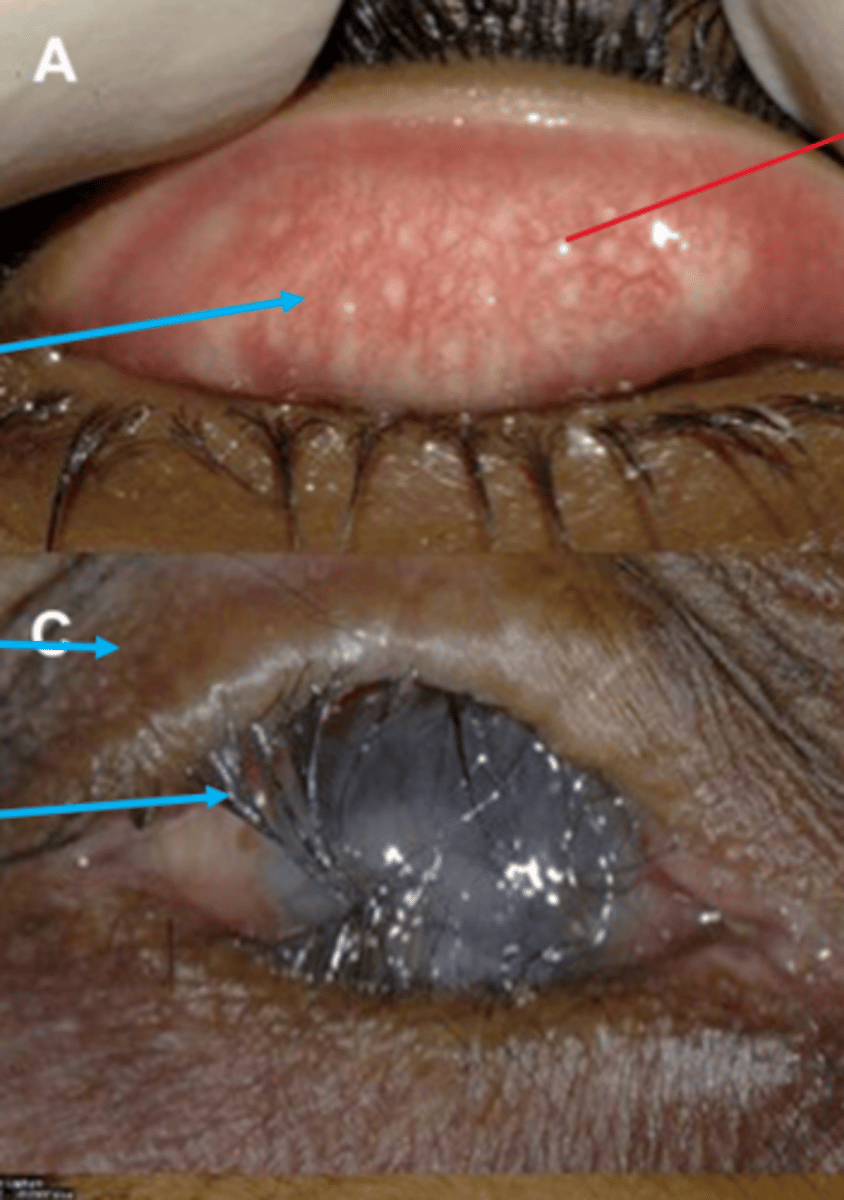
if eyelashes are turned outward what happens to the ocular surface
it is exposed
what are some signs of ectropion
hyperemia, SPK, corneal scarring
what are some symptoms of ectropion
redness, foreign body sensation, irriation, blurriness
eyelid malignancy, floppy eyelid syndrome, and nocturnal lagophthalmos are all differential diagnoses of
ectropion
what is eyelid malignancy
misdirected lashes (primary or secondary)
what is floppy eyelid syndrome
when the laxity of tarsal plate results in easy eyelid manipulation (esp during sleep)
what is nocturnal lagophthalmos
incomplete eyelid closure at night (may or may not be with pathology)
eyelid malignancy
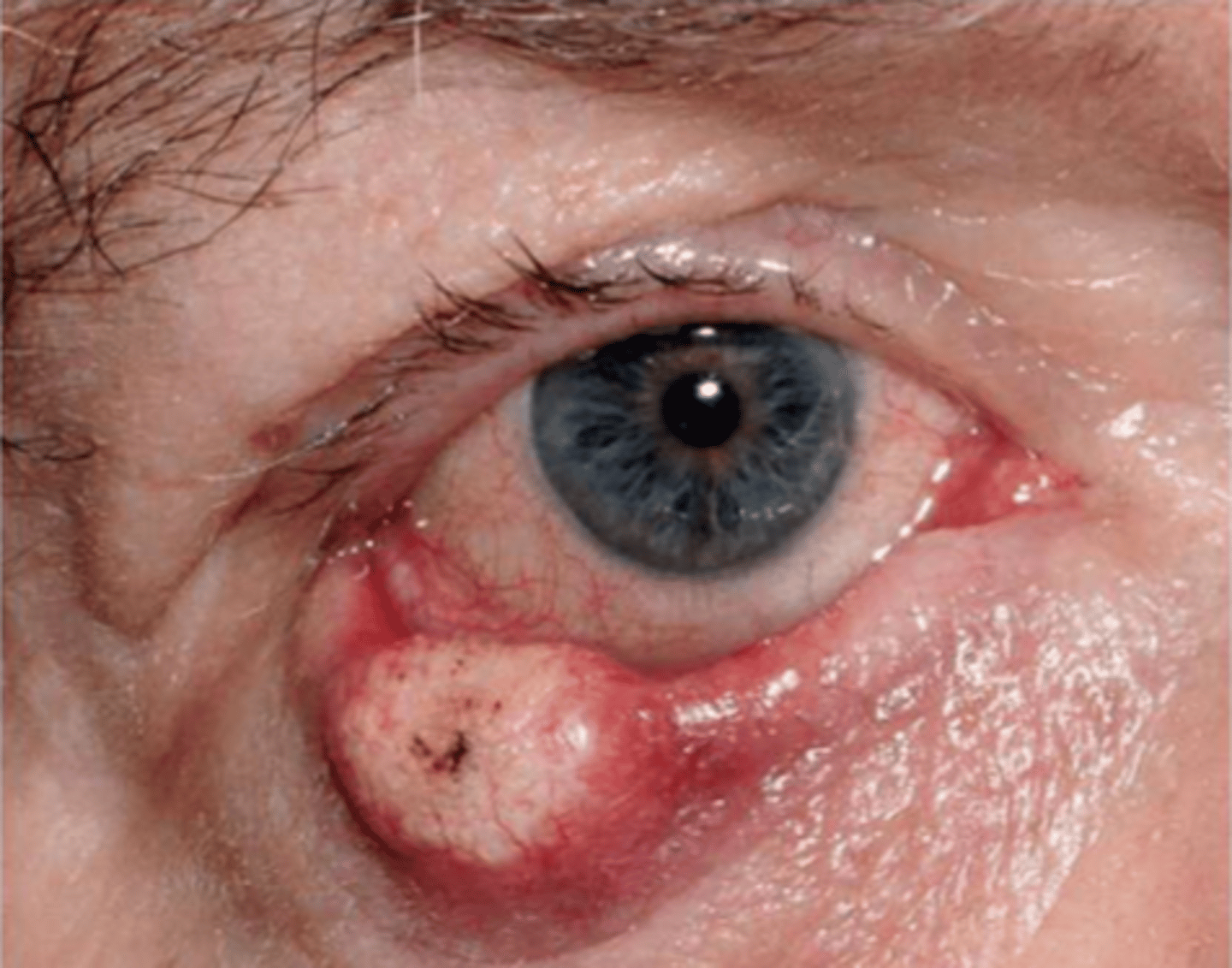
floppy eyelid syndrome
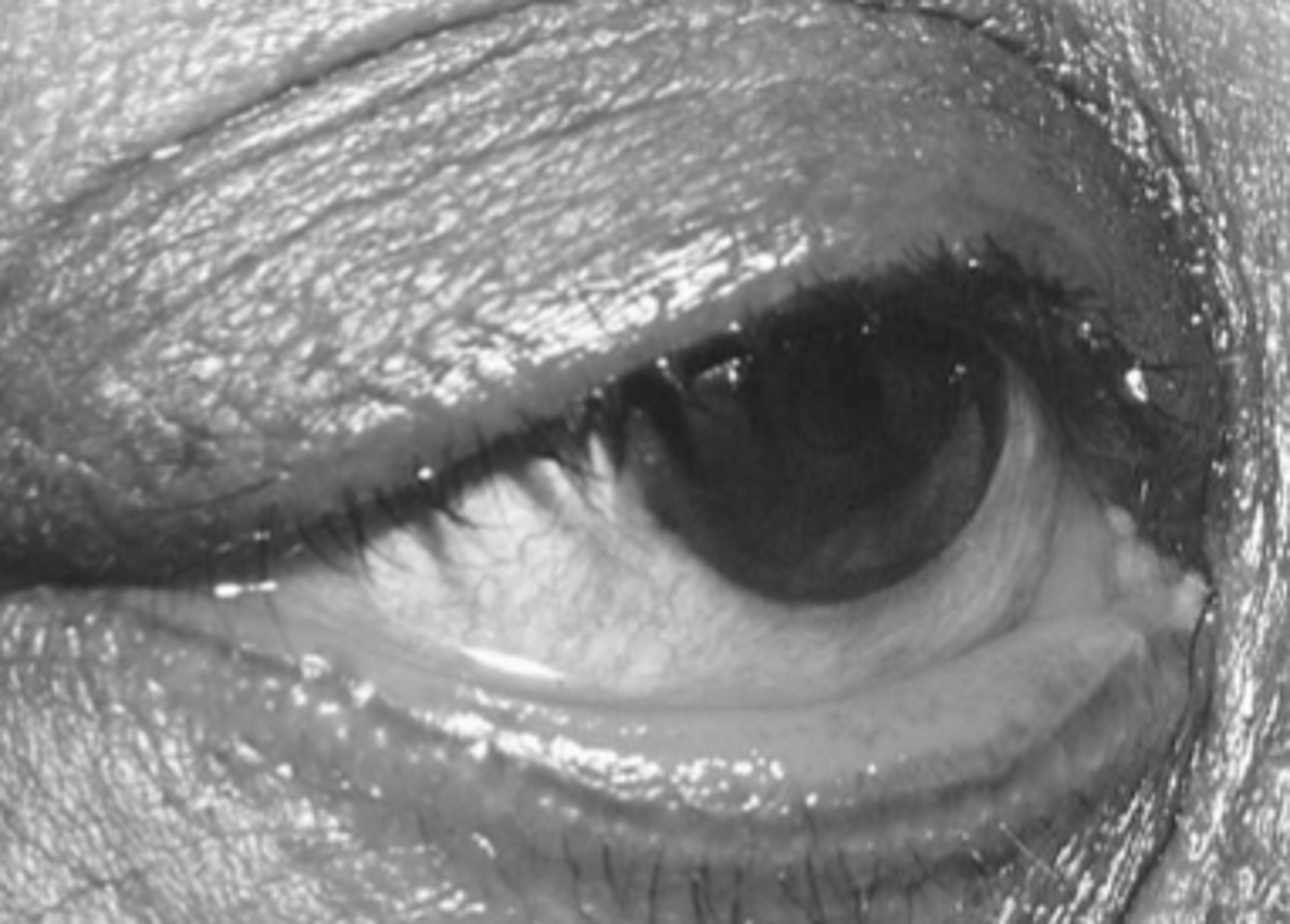
nocturnal lagophthalmos

floppy eye lid is associated with (3)
obese males with sleep apnea, kerataoconus, or sleeping facing the pillow
do floppy eyelids present with mucous disharge, tearing, or corneal involvement
yes
what is the management of floppy eyelid syndrome conservatively
ocular lubricant, BCL, tape eyes lids or eye cover
what is the alternative tx to floppy eyelid tx when the conservative way doesn't work
surgery and management of sleep apnea
congenital ectropion affects who
pediatrics (may or may not be with genetic malformations)
what is congenital ectropion pathogenesis
absence or atrophy of tarsal plates with skin shortage and refraction
which group of people does involutional (senile) ectropion affect
getriatric population
what is the pathogenesis of involutional (senile) ectropion
horizantal laxity of medial first and continues to the lateral canthal tendon
tarsal degeneration
what is the conservative tx for involutional (senile) ectropion
lubricants, lower lid taping, band SCL
what is the nonconservative tx for involutional (senile) ectropion affect
surgery
cicatricial ectropion affects which age group of people
any age witch ocular condition with scarring from face or eyelid sx, truama or infilitrative conditions
pathogenesis for cicatricial ectropion
posterior lamella contraction leading to outward turning of the eyelids
conservative tx for cicatricial ectropion
lubricant, lower lid taping, bandage SCL
non conservative tx for cicatricial ectropion
surgery repair
who does paralytic ectropion seen in
any age with facial nerve paralsis from bells palsy, stroke, or sx/trauma
paralytic ectropion pathogenesis
decreased contraction or tone of orbicularis oculi from facial n palsy
tx for paralytic ectropion conservatly
lubricant, taping of lower lid, BCL
nonconservative tx for paralytic ectropion
surgery repair
who is mechanical ectropion seen in the most
any age with presence of mass or periocular swelling that results in outward rotation of lids
pathogenesis of mechanical ectropion
mechanical displacement of lids due to mass or swelling of the periocular region
conserative tx for mechanical ectropion
lubricant, taping of lower lid & BCL
nonconservative tx for mechanical ectropion
surgery repair
inflammatory ectropion affects who the most
any age associated w inflammation or allergies
presentation of inflammatory ectropion
facial inflammation causing outward rotation of eyelids
can be concurrent with cicatricial ectropion